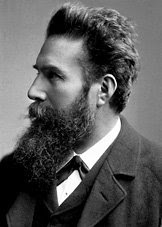CERN Open Days 2019 - First Day Visit
It has been more than 10 years since I graduated from University taking up BS Physics. Almost 10 years of being part of the general working public with a 9-5 day job. Moving to Germany for work meant reading daily newsletters relating to EU's researches and news on latest technology advancement instead of Asia. One news highlight was that CERN is once again opening its doors (and tunnels) to the public and this only happens every 5-6 years in time for their long shutdown. It was such a great opportunity as CERN is the Disneyland of Physics peoples. For those now aware of what CERN is let me open this blog post with a brief introduction.
What is CERN?
To make sure that I don't provide any wrong information I will quote CERN's home website and for much much more details click here.
CERN stands for Conseil Européen pour la Recherche Nucléaire or in english European Council for Nuclear Research. The main area of research is Particle Physics and the institution is often referred to as the European Particle Physics Laboratory.
What is CERN's mission?
- provide a unique range of particle accelerator facilities that enable research at the forefront of human knowledge.
- perform world-class research in fundamental physics.
- unite people from all over the world to push the frontiers of science and technology, for the benefit of all.
What are some significant works done in CERN?
To simply put things in perspective, I would site some Physics concept to really appreciate the works done in CERN. There are 4 forces that is observed in the universe currently, the strong force, the weak force, the electromagnetic force, and the gravitational force. These were theory and several advancement were done to provide a much more tangible illustration of these concepts. Some early works on two of the forces, the weak force and the electromagnetic forces, were carried out circa 1960. Experimentation in CERN in the year 1970 brought evidences to these ideas leading to the discovery of W and Z particles by 1980s. CERN researchers Simon van der Meer and Carlo Rubbia shared the 1984 Nobel Prize in physics for this discovery.
The latest big accomplishment in CERN was the experimentation leading to the discovery of Higgs Boson which was theorize to be the reason behind the mass of the elementary particles.
Despite all the works in particle physics, one biggest contribution of CERN to the world is the World Wide Web (www) which was pretty much revolutionized the internet of today.
When one mentions about CERN immediately LHC comes to mind. LHC stands for Large Hadron Collider that is used for the collision experiments. With LHC comes the detectors and 4 main detectors are ALICE - detects quark-gluon plasma, ATLAS - general-purpose detector, CMS - general purpose detector and LHCb - works mostly on matter and antimatter.
So CERN Open Days. 75,000! Thats how many people visited CERN during their open days last September 14-15, 2019. It was a massive event and was highly succesful. With this entry I want to share some of the pictures I took during the event.
The latest big accomplishment in CERN was the experimentation leading to the discovery of Higgs Boson which was theorize to be the reason behind the mass of the elementary particles.
The Nobel Prize in Physics 2013 was awarded jointly to François Englert and Peter W. Higgs "for the theoretical discovery of a mechanism that contributes to our understanding of the origin of mass of subatomic particles, and which recently was confirmed through the discovery of the predicted fundamental particle, by the ATLAS and CMS experiments at CERN's Large Hadron Collider."
Despite all the works in particle physics, one biggest contribution of CERN to the world is the World Wide Web (www) which was pretty much revolutionized the internet of today.
When one mentions about CERN immediately LHC comes to mind. LHC stands for Large Hadron Collider that is used for the collision experiments. With LHC comes the detectors and 4 main detectors are ALICE - detects quark-gluon plasma, ATLAS - general-purpose detector, CMS - general purpose detector and LHCb - works mostly on matter and antimatter.
So CERN Open Days. 75,000! Thats how many people visited CERN during their open days last September 14-15, 2019. It was a massive event and was highly succesful. With this entry I want to share some of the pictures I took during the event.
Where did I go?
First Day
I was at P1 location in Meyrin. No underground visit but I went to see:
1. The Synchrocyclotron (SC) - display of the first CERN accelerator that ran between 1957 to 1990.
2. CLIC - Compact Linear Collider
I also went to several open showrooms.
And that ended my Day 1.





Comments
Post a Comment